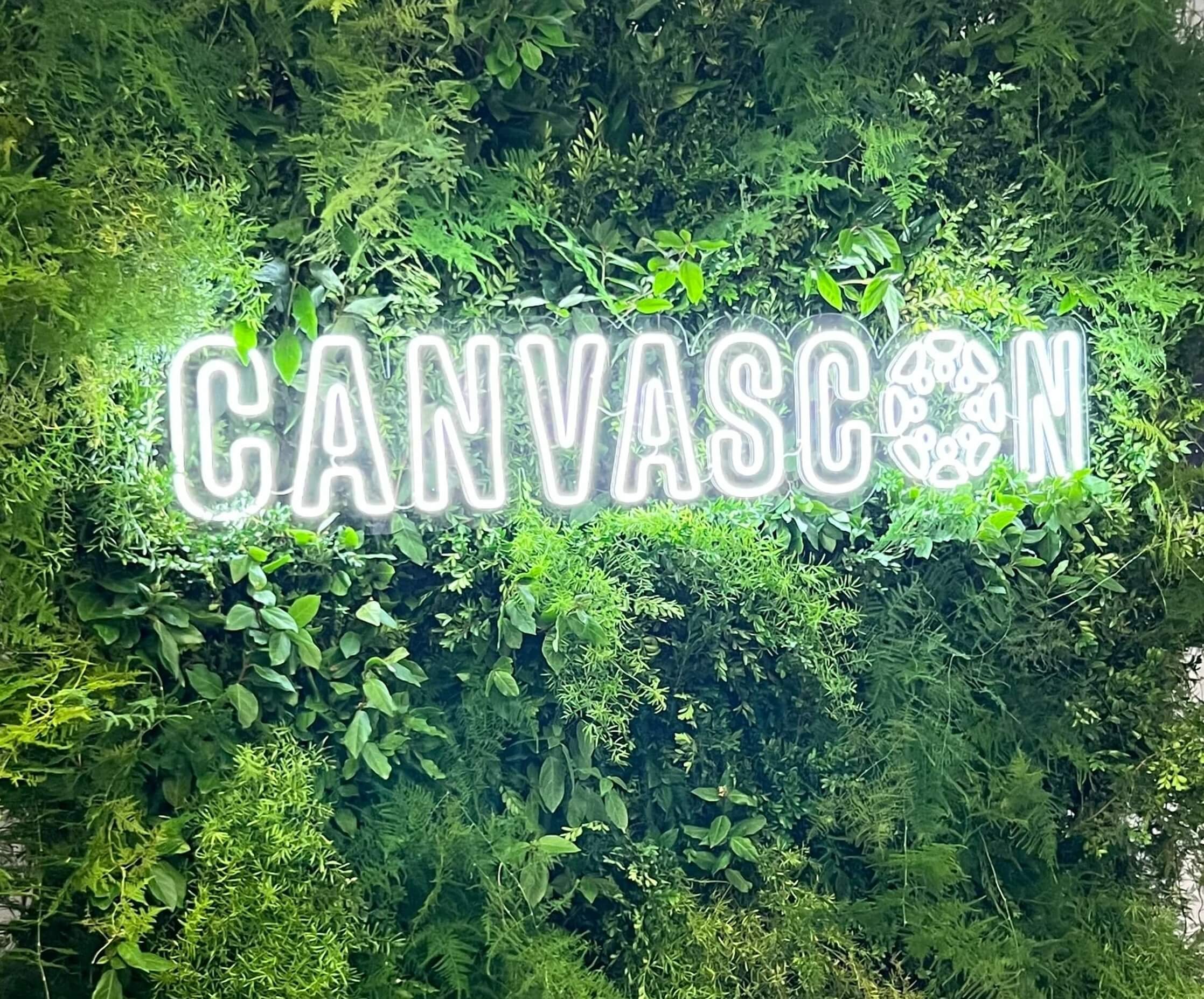Reflections on CanvasCon Europe 2024
Last week, I was fortunate to be invited by Instructure to attend CanvasCon in Barcelona. This is Instructure’s European conference and follows their main event, InstructureCon, which took place in Las Vegas in July.
In the UK, Instructure is best known for Canvas, their virtual learning environment (VLE) product. As I’ve reported in my annual VLE market analysis, recent years have seen Instructure build significant momentum in the UK, with a growing market share as a steady stream of UK higher education institutions (HEIs) switch to Canvas. They have been the most, if not the only, successful player in this market recently, with Canvas being implemented across small, medium, and large HEIs. Their most recent new client is the University of Manchester, one of the UK’s largest universities.
It’s worth saying at the outset that Instructure is more than just Canvas. This is important to understand generally, but also because a key theme in Instructure’s messaging is the idea of a learning ecosystem.
For those less familiar with this ecosystem, it currently includes products such as Canvas Studio, Canvas Catalog, Canvas Credentials, Impact, and the recently launched AI-powered Intelligent Insights. Instructure’s 2024 acquisition of Parchment, a digital credential management platform, further adds to the ecosystem.
Another aspect of this ecosystem is the collection of companies that partner with Instructure. At InstructureCon in July, the company launched what they’re calling their EdCo Partner Program, which includes partnership tiers offering companies various ways to collaborate with Instructure.
Regarding company partnerships, it’s hard not to increasingly equate the ecosystem strategy and developments in this area, such as Canvas App Discovery, to an Apple App Store paradigm. This aligns with their messaging, and if managed well in a way that remains attractive and viable for companies, it strengthens this type of proposition.
Strategy, trends and the now and the not yet…..
There are various things to cover from CanvasCon, but strategy and messaging are of particular interest for two main reasons. The first is whether there is any evidence of a shift in these areas following the recent acquisition of Instructure by the global investment firm KKR, and the second is understanding how they continue to differentiate themselves in this market.
In the UK, there has been a tendency to parrot the line that all VLEs are pretty much the same, which has created a general sense that there’s a lack of differentiation in the market. Personally, I think that’s a bit lazy and inaccurate, and if we zoom out to a more strategic level, we can see notable differences.
Of the four main market players, Instructure is the company that appears most focused on transcending the VLE space in its messaging. The ecosystem theme is a key part of this, as is their focus on lifelong learning, which featured heavily at this event, as it has in previous ones.
Like similar edtech conferences, several big trends influencing education to varying degrees were referenced throughout.
These included more people needing to retrain and upskill throughout their careers by engaging with shorter and/or more diverse educational products, the use of digital platforms to store and present a perpetual and evolving educational record, and technological developments enabling better personalisation of education.
These themes were evident in the lifelong learning section of the product roadmap session. The three Ps of pathways, portfolio, and passport were covered as enhancements in the works that we’ll see more of in 2025. These developments align with the aforementioned trends of individual customisation and digital records of learning and achievement.
In the UK context, there are some signs that support a strategic focus on lifelong learning. We potentially have a government policy enabler in the form of the Lifelong Learning Entitlement (LLE), although a change of government adds further layers of uncertainty.
We also have evidence of more UK HEIs investing in shorter forms of provision that may or may not be credit-bearing and disaggregated from larger awards. But the question is, what’s driving this in the UK?
I have to admit to being a bit sceptical about the wider lifelong learning narrative. We’ve seen a 10-plus-year period with an explosion of short courses in the form of MOOCs, and a vast array of online and other courses being offered by individuals through to large companies – but when people talk about lifelong learning, that barely gets referenced.
The lifelong learning narrative as it relates to HE seems to be more about the disaggregation and disruption of the most dominant product, the degree.
However, I’m not sure that activity around shorter forms of provision in UK HE is really at that stage yet. I would describe most activity to develop shorter forms of provision in UK HE as phase two of what came before. In many cases, there is a greater need and appetite for the maturation of universities’ existing portfolios of short offerings than for a bigger transformative agenda that challenges the dominant degree paradigm.
Some institutions are essentially asking themselves questions such as:
How do they bring together a scattered, and in some cases cobbled-together, portfolio of shorter courses into a unified offering that creates an opportunity for income diversification?
How do they develop the digital infrastructure to manage this type of student experience and non-matriculated students?
Interestingly, this seemed to play out in a session on lifelong learning at the conference, as the University of Edinburgh highlighted that their recent adoption of Canvas for short courses was driven by a project to unify their vast and scattered portfolio into one platform. Another session from Munster Technological University highlighted how Canvas Catalog is a strong proposition for them, as it acts as a shop window for a growing portfolio of on-demand courses.
Instructure is well positioned to support UK HEIs through their products, but I see this as being more about portfolio maturation and management than (cue movie trailer announcement voice) “revolutionising the way the world learns”...
This perhaps gets to the heart of a challenge faced by edtech companies in general. While big-picture trends may be widely discussed, they don’t always reflect the immediate realities or the current core challenges facing HEIs. So building a strategy based on these trends inevitably risks focusing more on speculative future developments than on addressing the actual needs of your clients in the here and now.
It will be interesting to observe how Instructure continues to navigate the tension between the present and the future, but their wider lens focus somewhat differentiates them from other players. Also, the evidence so far suggests that their recent acquisition is likely to propel that strategy forward rather than fundamentally change it.
Product development, differentiation and the potential for unintended consequences
VLE product development has garnered much greater attention recently due to AI. As a result, it’s another area of company differentiation.
Instructure arguably made one of the most eye-catching announcements in 2023 when they revealed a partnership that brought together Canvas and Khan Academy’s AI student tutor and teaching assistant, Khanmigo.
Although this garnered attention at the time, it has led to critiques suggesting it is an example of the company ceding responsibility for integrating teaching and learning AI features within their own platform. There have also been question marks over the reception and credibility of a tool with a strong K12 association in higher education.
Interestingly, I don’t recall Khanmigo being mentioned at all during the conference, which wasn’t short on AI coverage in general. Instead, the main AI-focused product developments that were covered were those that had already been announced, including:
Discussion summaries
Intelligent Insights and the "Ask your Data" function, enabling engagement with analytics via natural language
An upcoming option to translate inbox and discussion communications into over 100 different languages
Smart Search, which helps users locate course materials
On the whole, these are a good set of developments. Intelligent Insights stands out for me because I believe that asking questions of data will not only enable wider access but also greatly enhance the use of analytics. I hope that conversational-led analytics will lead to more effective use of VLE data and, in turn, provide those developing analytics features with richer insights into the real questions educators are asking. Smart Search is also a useful enhancement, and will certainly help some poor students who still grapple with the long-standing issue of instructors using VLEs as disordered content repositories.
I would describe translations and discussion summaries as more idiomatic AI features that offer benefits but also have the potential for unintended consequences. Translation feels like a no-brainer, but there are academic issues in many UK programmes related to the level of English language proficiency among students, and the question is whether this feature will exacerbate or alleviate those problems.
Discussion summaries raise some questions too. While one can see the obvious time savings gained by being able to review a summary of activity, the concern is around unintended consequences. Will it make it easier for unproductive lurking? Will it help address known challenges around online discussions, such as participation levels, the dominance of certain students, and superficiality? I’ve previously spoken about AI features that seem primarily designed to improve business efficiency and are then transposed to education. This feels a little like that. However, it will be interesting to observe both the effect and reception of this feature over time.
One other point to note is that although Instructure hasn’t been the most aggressive in pushing AI-led product developments, they seem to understand the costs related to AI. This is something that doesn’t get discussed enough and presents another tension in edtech and HE in general, especially when positive new features and add-ons are only available at extra cost to UK HEIs, many of which are struggling financially. While many have questioned why UK HEIs aren’t doing more with AI, few have questioned whether they can afford it.
Beyond the AI-driven features, there was an almost overwhelming number of other product developments covered in the product roadmap session. A number of these focused on enhancements to grading and rubrics, and of all of these, self-assessment rubrics caught my attention. This feature is on the way, and although it looks very much in-platform, at a time when students are increasingly using AI tools in their studies, a high-quality self-assessment rubric combined with generative AI tools to support evaluation has the potential to be a powerful learning aid.
Final thoughts
Overall, this was an enjoyable conference that had a good mix of sessions showcasing clients and how they are adopting and using Instructure’s range of products. This was complemented by some compelling talks from external speakers, such as Jóhanna Bjartmarsdóttir, a student who shared her challenging educational journey, which ultimately led her to establish an instructional design company focused on accessible education.
UK representation at the conference was good, despite budget pressures, and overall, the conversations I had indicated positive sentiment from UK clients. This is perhaps partly due to the recognition that Instructure has been on an upward trajectory in the UK and doesn’t carry the baggage or negative associations that some of the legacy incumbents have in this space.
Instructure is well positioned to remain highly competitive in the UK market, although it seems that fewer HEIs are looking to switch VLEs at present. However, it is an interesting time for this market, which comprises four companies: Instructure (Canvas), D2L (Brightspace), Anthology (Blackboard), and Moodle, with their respective VLE products.
With leadership changes, acquisitions, and new and emerging strategies around areas such as AI, it feels as though this market is becoming more dynamic and differentiated, bringing both risks and opportunities. In a market that generally moves slowly, time will tell how some of the strategies and decisions made by companies now and in recent times will change or solidify recent market trends.


























